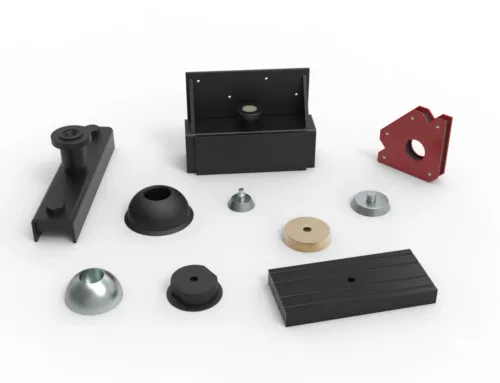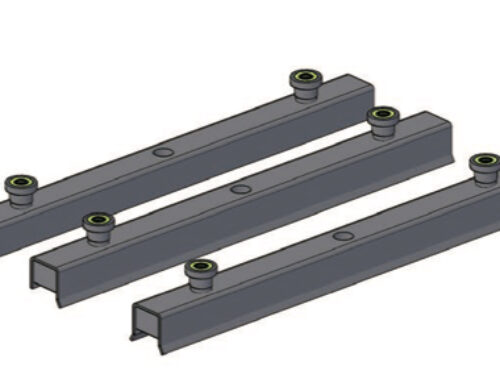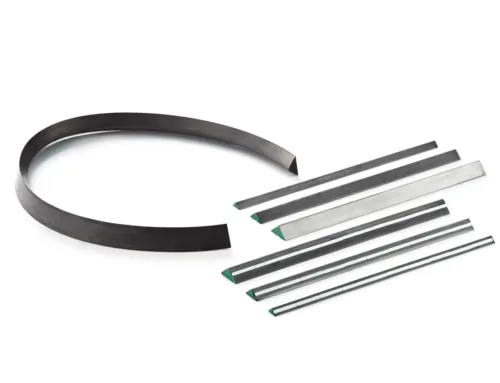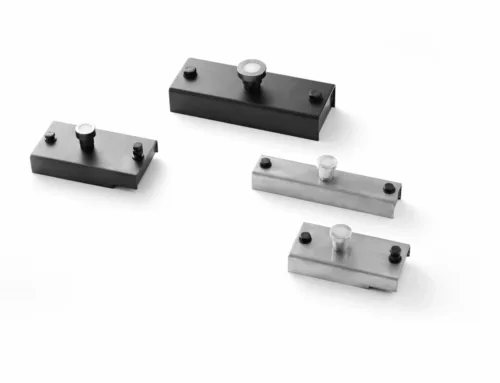What is a Voice Coil Motor
A voice coil motor (VCM) is a type of linear actuator that converts electrical energy into precise mechanical motion. It operates on the principle of electromagnetic force generated when an electric current passes through a coil placed within a magnetic field. This force causes the coil, and attached parts, to move in a straight line.
Basic Concept
- Electromagnetic force: Current in the coil creates a magnetic field interacting with the permanent magnet.
- Linear motion: Unlike traditional rotary motors, VCMs provide direct linear displacement.
- Precision control: Smooth and accurate positioning makes VCMs ideal for fine motion applications.
Historical Background and Naming Origin
Originally developed from the technology used in loudspeakers, the term “voice coil” reflects its roots. The coil that moves air to produce sound in speakers inspired the same design for precise, controllable motion in industrial and technological uses. Over time, this evolved into the voice coil motor widely used today for position control tasks.
Comparison with Other Electric Motors
| Feature | Voice Coil Motor | Stepper Motor | Servo Motor |
|---|---|---|---|
| Motion Type | Linear | Rotational | Rotational or Linear |
| Precision | High (smooth continuous motion) | Moderate (step-based) | High (closed-loop control) |
| Speed and Response | Very fast | Moderate | Moderate to fast |
| Complexity | Simple design | Complex control electronics | Complex mechanics and control |
| Size | Compact | Larger | Larger |
VCMs stand out due to their simple structure, direct linear motion, and ability to deliver smooth force without gears or belts, making them ideal for applications demanding high precision and rapid response.
How Does a Voice Coil Motor Work

A voice coil motor (VCM) works on a simple but effective principle: it uses the interaction between a magnetic field and an electric current to create motion. When electricity flows through the coil, it generates a magnetic field that either pulls or pushes against a permanent magnet. This causes the coil to move back and forth in a controlled, smooth manner.
Key Components
- Coil: A tightly wound wire that carries the electrical current.
- Magnet: Usually a strong permanent magnet that creates a steady magnetic field.
- Bobbin: The structure that holds the coil in place and supports its movement.
- Housing: The outer frame that keeps all parts aligned and protects the motor.
Working Mechanism
When you apply current to the coil, it produces a magnetic field that either attracts or repels the magnet nearby. This force moves the coil linearly along the bobbin inside the housing. By changing the current’s direction and amount, you control how far and how fast the coil moves. This direct drive method means the VCM can provide very smooth and precise motion without complex gears or mechanisms.
This straightforward operation is why voice coil actuators are popular for applications where precision and fast response matter.
Types of Voice Coil Motors
Voice coil motors (VCMs) mainly come in two types: moving coil and moving magnet. Each has its own design and advantages, making them suitable for different applications.
Moving Coil Type
- The coil moves inside a fixed magnetic field.
- Lightweight moving parts allow for quick, precise motion.
- Common in precision positioning and small devices.
- Easier to cool since the coil is exposed.
Moving Magnet Type
- The magnet moves while the coil stays fixed.
- Offers better heat management because the coil is stationary.
- Often used in higher power applications.
- Can handle larger forces and longer strokes.
Comparison of Pros and Cons
| Feature | Moving Coil | Moving Magnet |
|---|---|---|
| Weight of Moving Part | Lighter, better for fast response | Heavier, slower response |
| Heat Dissipation | Less efficient, coil moves | More efficient, coil fixed |
| Force Capability | Moderate force | Higher force |
| Stroke Range | Shorter strokes typically | Longer strokes possible |
| Application Fit | Precision devices, small spaces | Industrial, heavy-load setups |
Choosing between these types depends on your need for speed, force, and heat management. For quick, precise control in compact spaces, moving coil is often the choice. For industrial use where power and cooling matter, moving magnet fits better.
Key Features and Technical Specifications of Voice Coil Motors
Voice coil motors (VCMs) stand out for their precise control and efficient performance. Here are the key features and technical specs that matter most:
Stroke Length and Displacement
- Stroke length refers to how far the motor’s coil or magnet can move. Typical VCMs offer short but highly precise strokes ranging from a few millimeters up to several centimeters.
- This limited displacement is ideal for applications needing fine positioning rather than long travel distances.
Force Generation and Control Accuracy
- VCMs provide linear force proportional to the current, enabling smooth, direct control.
- They deliver high force density relative to their size, supporting weight loads in compact designs.
- Control accuracy is often in the micron range, perfect for precision actuator technology like optics or medical devices.
Dynamic Response and Bandwidth
- One of the best features is their quick dynamic response, thanks to low moving mass and no gears.
- VCMs typically operate with a wide bandwidth (up to several kHz), which means they can react to changes very fast, outperforming many stepper motors or servo systems.
Voltage and Current Characteristics
- Voltage and current requirements depend on the application but usually involve low voltage operation (a few volts to tens of volts).
- High currents produce more force but must be balanced with power consumption and heat management to maintain efficiency.
| Specification | Typical Range | Notes |
|---|---|---|
| Stroke Length | 1 mm – 50 mm | Varies by design |
| Force Output | Millinewtons to several newtons | Proportional to current |
| Control Accuracy | Micron-level | Critical for precision control |
| Bandwidth | Up to several kHz | Supports fast dynamic response |
| Voltage | 5 V – 48 V | Application dependent |
| Current | Few mA to several Amperes | Limits force and heat |
Understanding these specs helps in selecting the right VCM for your needs—whether it’s smooth motion in robotics or tight force control in consumer electronics.
For more on the role of materials affecting these specs, check out NBAEM’s insights on magnetic materials in motor technology to see how quality magnets improve VCM efficiency and durability.
Applications of Voice Coil Motors
Voice coil motors (VCMs) are key in many fields where precise and smooth motion is essential. Here’s where they shine:
Precision positioning systems
VCMs provide accurate, vibration-free control, making them ideal for optical devices, semiconductor manufacturing, and laboratory instruments.
Medical devices
Their compact size and high responsiveness are perfect for surgical tools, diagnostic machines, and drug delivery systems that require exact movements.
Robotics and automation
Voice coil actuators offer fast, precise linear motion, enhancing robotic arms, material handling, and automation processes in assembly lines.
Consumer electronics
VCMs are found in camera autofocus mechanisms, hard disk drives, and gaming controllers, delivering quick and quiet operation.
Industrial machinery
They improve tasks like valve control and vibration testing, where controlled force and motion accuracy are important.
Their versatility across these applications comes down to precise force control and responsiveness, making voice coil motors a reliable choice for advanced motion solutions.
Advantages of Using Voice Coil Motors
Voice coil motors (VCMs) stand out for their high precision and smooth motion control. They offer pinpoint accuracy, making them ideal for applications where exact positioning matters. Thanks to their simple design, VCMs deliver motion without the jerky starts and stops seen in other electric motors.
Another big plus is their quick response and high bandwidth. These motors react fast to control signals, allowing for rapid adjustments in speed and position. That makes them perfect for systems requiring real-time feedback and fine force control.
VCMs are also compact and lightweight. Their design eliminates bulky gears and complex mechanical parts, resulting in a smaller, lighter unit. This makes them a great fit for tight spaces and portable devices common in U.S. industries like robotics and medical tech.
Low maintenance is another advantage. With fewer parts that wear out, VCMs typically need less upkeep than traditional motors. This reliability reduces downtime and operational costs over the long run.
Together, these benefits make voice coil motors a popular choice for precision actuator technology across various industries.
Challenges and Considerations
Voice coil motors come with some challenges you should be aware of, especially if you’re thinking about them for precision applications in the U.S. market.
Heat dissipation and thermal management
Because VCMs rely on electrical current to generate force, they produce heat during operation. Managing this heat is crucial to prevent performance drops or damage. Without proper thermal design, the motor’s efficiency and life span can take a hit.
Limited stroke range
Unlike some other actuators, voice coil motors typically have a shorter stroke or travel distance. This means they’re great for precision moves over small distances but aren’t the best fit if you need long-range motion.
Power consumption considerations
VCMs can draw significant current when pushing for high force or speed. This means sizing your power supply and control electronics correctly is important to avoid energy waste and overheating. Efficient control methods help, but power use is always a factor to keep in mind.
Understanding these issues early helps you pick the right voice coil actuator basics for your needs and ensures smooth, reliable performance in your projects.
Role of Magnetic Materials in Voice Coil Motors
Magnetic materials play a crucial role in the performance and reliability of voice coil motors (VCMs). The quality of these materials directly impacts the motor’s efficiency, force output, and durability. Using high-grade magnetic components ensures smoother operation and better control, which is essential in precision applications common in the U.S. market.
NBAEM offers a wide range of advanced magnetic materials designed specifically for actuators like VCMs. Their materials provide strong magnetic fields and excellent thermal stability, helping to maintain consistent force and reduce heat-related wear. This focus on quality means voice coil motors can deliver higher accuracy and longer life, meeting the demanding needs of industries such as robotics, medical devices, and consumer electronics.
In addition to top-tier materials, NBAEM provides customization options and technical support tailored to your specific voice coil motor requirements. Whether you need magnets optimized for dynamic response or those that improve energy efficiency, NBAEM’s expertise can help enhance your VCM design.
For more detailed information on how magnetic materials integrate into motor technology, you can explore NBAEM’s resources on magnetic materials in motor technology. This resource highlights the impact of magnetic components on overall motor performance, which is key to understanding how the right materials boost VCM efficiency and reliability.
and Future Trends in Voice Coil Motor Technology
Voice coil motors (VCMs) remain a core part of precision actuator technology, known for smooth, accurate motion and quick response times. To recap, VCMs offer unique benefits like compact design, high force control, and dynamic performance, making them stand out compared to stepper motors and other electric actuators. Their applications stretch across medical devices, robotics, consumer electronics, and industrial machinery—where precise positioning and fast, reliable movement matter most.
Looking ahead, voice coil motor technology is evolving with several exciting trends:
- Advanced Magnetic Materials: Improved magnets mean stronger force generation and better efficiency. Suppliers like NBAEM are pushing boundaries with specialized magnetic materials tailored for higher durability and performance.
- Integration with Smart Systems: VCMs are increasingly used with sensors and digital controls for adaptive performance in automation and robotics.
- Miniaturization: There’s a growing demand for smaller, lightweight VCMs without losing power or precision, especially in portable medical and consumer devices.
- Noise Reduction: New designs and materials are helping reduce noise, which is key in medical and consumer applications.
- Improved Thermal Management: Innovations focus on better heat dissipation for longer life and stable operation under heavy use.
NBAEM is actively investing in research and development to support these advances. They offer customized magnetic material solutions and close technical support, helping manufacturers optimize VCM efficiency and durability. Their collaboration approach supports creating next-gen actuators that meet evolving industry needs.





Leave A Comment